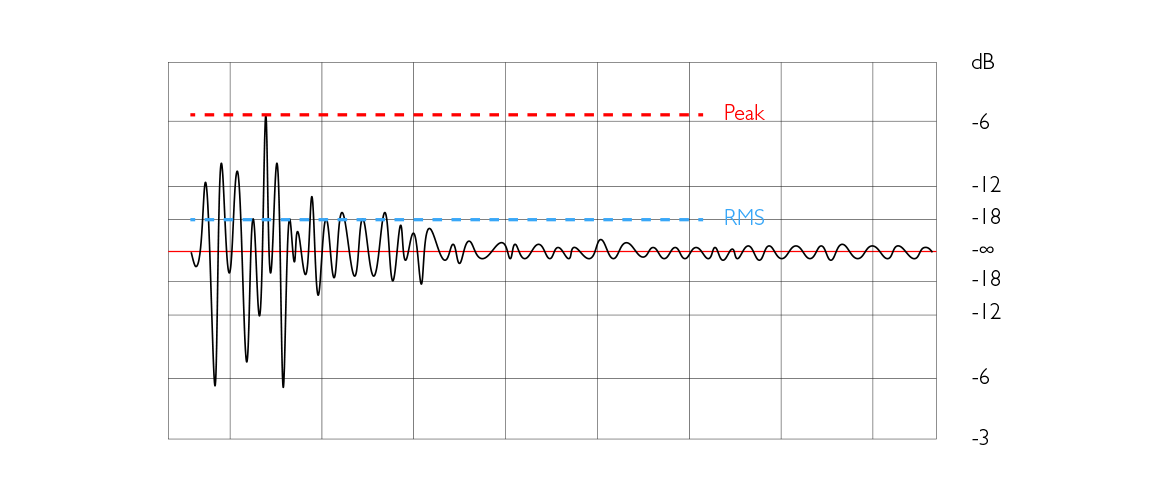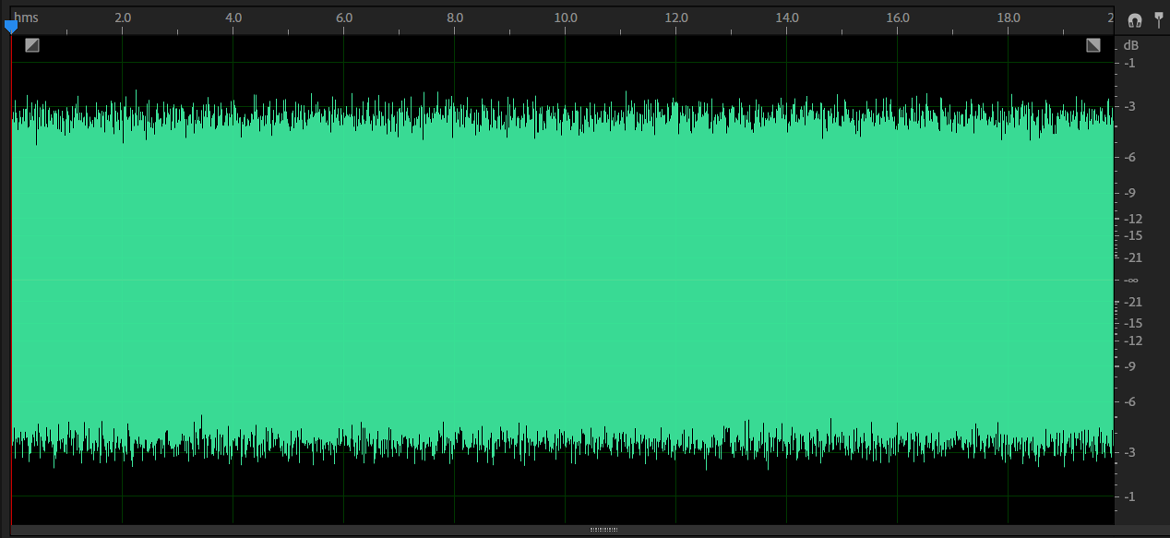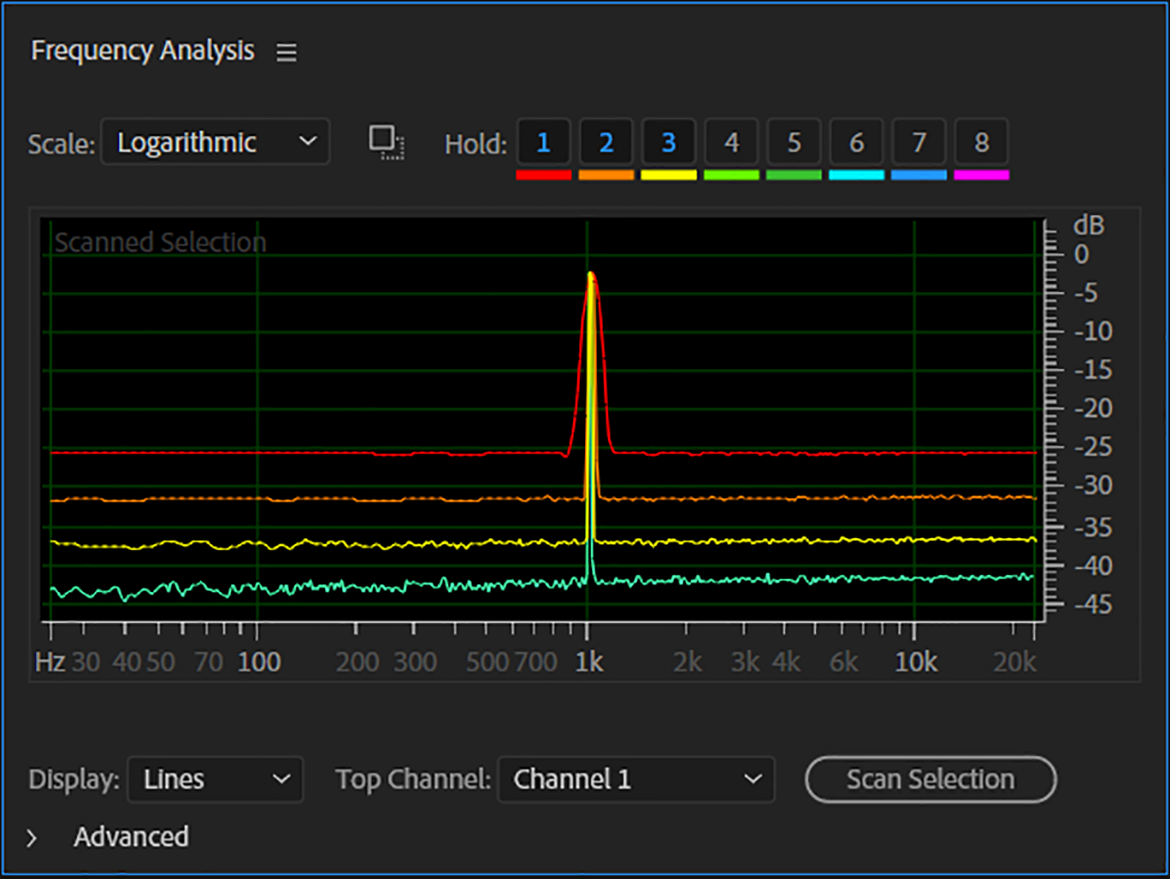Two measures, why?
When we measure the noise of a microphone – and present the result in the spec sheet – we use two different methods as stated in the standards (IEC 60268-4 Microphones, Clause 16.2 Method of measurement).
The two methods are A-weighted, RMS and ITU-weighted, Quasi-peak.
The numbers we get from each of these methods are different. We will explore what the difference means.
Weighting
We use two different frequency-weighting curves: A-weighting and ITU-weighting (formerly also known as the CCIR-weighting). These curves are much alike, introduced to compensate for the frequency response of the ear at low levels. The weighting-curves reduce the signal at low frequencies. However, above 1 kHz, the signal is boosted, especially in the ITU-curve methodology.

RMS or Peak
When measuring the level of a signal, we often use RMS, which means Root Mean Square. This measure expresses a kind of average value based on the energy contained within the signal. The peak value, however, is the portion of the waveform (on either side, plus or minus) that is the farthest away from the 0-line.

Here is the waveform of a signal. The peak value and the RMS value of that signal are both indicated in the diagram.
The peak-level therefore always is higher than the RMS-level (unless the signal is a pure square-wave).
When the measurement instead of "peak" is described as "quasi-peak", it means that the bandwidth is not infinite but limited to the standard audio range from 20 Hz to 20 kHz.
The ITU-weighted quasi-peak level is typically 11-13 dB higher compared to the RMS level. However, some lesser quality
condenser microphones suffer from what is called "popcorn-noise" (sounds like the popping of corn). When this occurs, the difference is larger as the peak-measure better expresses the single "popping"-impulses.
Some manufacturers only publish the A-weighted RMS detected self-noise.
A microphone’s signal-to-noise ratio
The signal-to-noise ratio of a microphone is defined with reference to a SPL of 94 dB (the same as 1 Pascal). It expresses the interval from 94 dB SPL to the level of the self-noise, RMS, A-weighted.
Note: The signal-to-noise ratio must not be confused with the dynamic range, which is always much higher (from max SPL to self-noise).
Can we hear any signal buried in the noise?
Below is an example where white noise is mixed with a 1 kHz tone. The unweighted level (RMS) of the noise is exactly the same as the RMS-level of the 1 kHz sinewave.

When looking at the waveform, it is impossible to see the sinewave. However, we can hear it if we play it back. Further, we can reveal the sinewave by making a frequency analysis of the signal.
The frequency measurement is performed by applying FFT-analysis. Four different settings are applied:
1 (red upper curve) FS: 48 kHz FFT size: 1024 (bandwidth: 46.88 Hz)
2 FS: 48 kHz FFT size: 4096 (bandwidth: 11.72 Hz)
3 FS: 48 kHz FFT size: 16834 (bandwidth: 2.93 Hz)
4 (green lower curve) FS: 48 kHz FFT size: 65536 (bandwidth: 0.73 Hz)

Sometimes we can extract signals even when recorded below the level of the self-noise. (But this is not a technique you should aim for…).
Preamp noise
Using a low-noise microphone does not help you if the preamp is noisy. Low-sensitivity microphones may especially need a lot of amplification. In these cases, it often is the noise of the preamp that is responsible for the resulting noise level.
The self-noise of dynamic microphones is seldom specified because the preamp usually determines the noise level.
Conclusion
Microphone self-noise is unwanted but its presence is due to the laws of physics. It is up to the manufacturer to minimize microphone self-noise and make it as smooth and inaudible as possible. It is up to the user to select the right microphone – and the right preamp – that fits the application.
References
[1] IEC 60268-4 Sound System Equipment - Microphones.
[2] Recommendation ITU-R BS.468-4: Measurement of audio-frequency noise voltage.